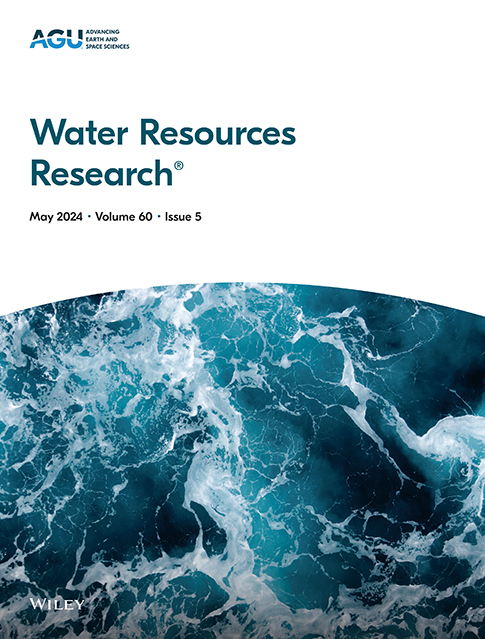一种基于注意力的可解释深度学习方法,用于对以积雪为主的喀斯特山区流域进行空间分布式水文建模
IF 4.6
1区 地球科学
Q2 ENVIRONMENTAL SCIENCES
引用次数: 0
摘要
在全球许多地区,融雪充注的山区岩溶含水层是市政和农业供水的重要来源。在这些流域中,气象、地形和水文地质因素的复杂相互作用导致了错综复杂的补给-排泄途径。本研究介绍了一种空间分布式深度学习降水径流模型,该模型结合了卷积长短期记忆(ConvLSTM)和空间注意力机制。利用来自洛根河流域和子流域的数据对深度学习模型的有效性进行了评估,洛根河流域和子流域是犹他州北部以岩溶为主的典型水文系统。与 ConvLSTM 基线相比,加入空间注意力机制提高了模拟流域出口排放的性能。对训练模型中注意力权重的分析揭示了在融雪和衰退条件下对排水量贡献最大的独特区域。此外,在子流域尺度上对模型进行微调,可以深入了解跨子流域的地表下连通性。这些发现与详细的水文地球化学示踪研究结果一致。研究结果凸显了所提出的深度学习方法在揭示岩溶含水层系统复杂性方面的潜力,为未来气候条件下的水资源管理提供了宝贵的见解。此外,研究结果表明,拟议的可解释、空间分布式深度学习水文建模方法有望用于非岩溶流域。本文章由计算机程序翻译,如有差异,请以英文原文为准。
An Attention-Based Explainable Deep Learning Approach to Spatially Distributed Hydrologic Modeling of a Snow Dominated Mountainous Karst Watershed
In many regions globally, snowmelt-recharged mountainous karst aquifers serve as crucial sources for municipal and agricultural water supplies. In these watersheds, complex interplay of meteorological, topographical, and hydrogeological factors leads to intricate recharge-discharge pathways. This study introduces a spatially distributed deep learning precipitation-runoff model that combines Convolutional Long Short-Term Memory (ConvLSTM) with a spatial attention mechanism. The effectiveness of the deep learning model was evaluated using data from the Logan River watershed and subwatersheds, a characteristically karst-dominated hydrological system in northern Utah. Compared to the ConvLSTM baseline, the inclusion of a spatial attention mechanism improved performance for simulating discharge at the watershed outlet. Analysis of attention weights in the trained model unveiled distinct areas contributing the most to discharge under snowmelt and recession conditions. Furthermore, fine-tuning the model at subwatershed scales provided insights into cross-subwatershed subsurface connectivity. These findings align with results obtained from detailed hydrogeochemical tracer studies. Results highlight the potential of the proposed deep learning approach to unravel the complexities of karst aquifer systems, offering valuable insights for water resource management under future climate conditions. Furthermore, results suggest that the proposed explainable, spatially distributed, deep learning approach to hydrologic modeling holds promise for non-karstic watersheds.
求助全文
通过发布文献求助,成功后即可免费获取论文全文。
去求助
来源期刊

Water Resources Research
环境科学-湖沼学
CiteScore
8.80
自引率
13.00%
发文量
599
审稿时长
3.5 months
期刊介绍:
Water Resources Research (WRR) is an interdisciplinary journal that focuses on hydrology and water resources. It publishes original research in the natural and social sciences of water. It emphasizes the role of water in the Earth system, including physical, chemical, biological, and ecological processes in water resources research and management, including social, policy, and public health implications. It encompasses observational, experimental, theoretical, analytical, numerical, and data-driven approaches that advance the science of water and its management. Submissions are evaluated for their novelty, accuracy, significance, and broader implications of the findings.
 求助内容:
求助内容: 应助结果提醒方式:
应助结果提醒方式:


